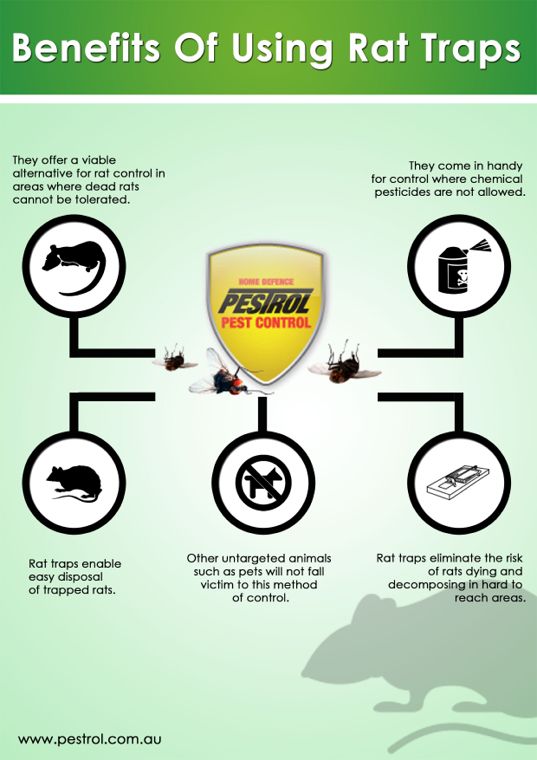Things you didn’t know about Rats…
How do you identify a rat infestation?
If man had an archrival, it would definitely be the rat. This is because rats have been the most troublesome pests during man’s time on earth. And although rats are no longer killing millions by spreading the bubonic plague (thanks to major advancement in the field of medicine), they can still cause substantial damage when they invade your home. Rats will gnaw at anything from clothing to wire insulation causing costly damage to your property.
In addition to their destructive feeding habits, rats are also capable of spreading diseases to humans and pets. According to the CDC, rats can spread up to 35 diseases either directly or indirectly including Hantavirus Pulmonary Fever, Bubonic Plague, Rat-Bite Fever among others.
View our rodent control products >
Things you didn’t know about Rats…
did you know any of these horrifyingly amazing facts about Rats?
- Rats’ front teeth grow 4½ to 5½ inches each year. Rats wear them down by continuously gnawing on everything around them, including cement, brick, wood, lead pipes, and other small animals.
- A female rat can mate as many as 500 times with various males during a six-hour period of receptivity—a state she experiences about 15 times per year. Thus a pair of brown rats can produce as many as 2,000 descendants in a year if left to breed unchecked. (A rat matures sexually at age three to four months.) An average rat’s life span is two to three years.
- A rat can tread water for three days and survive being flushed down the toilet.
- Rats eat their own feces, purely for the nutritional value.
- A rat can fall as far as 50 feet and land uninjured.
- If you were born in 1912, 1924, 1936, 1948, 1960, 1972, 1984, or 1996, then you’re a rat, according to Chinese astrology. This would make you quick-witted, resourceful, and something of a fashionista. Exactly like a rat, except for the clothes bit.
- Rats do not sweat. They regulate their temperature by constricting or expanding blood vessels in their tails.
- Innie or outie? Rats don’t have gallbladders or tonsils, but they do have belly buttons.
- There are an estimated 70 million Rats living in New York city.
The Life-cycle of a Rat
Rats can breed throughout the year if conditions are favourable, with a female producing up to 5 litters a year. Females reach sexual maturity in about five weeks. With a gestation period of only 21 days and a litter size of up to 14 young, a rat infestation can quickly get out of hand.
In optimum conditions, rats can live for up to 3 years but most of them will live for about one year due to their less than ideal living conditions.
(Source: https://en.wikipedia.org/wiki/Brown_rat#Reproduction_and_life_cycle)
How do you identify a rat infestation?
Rats are between 8 and 10 inches (20 – 25cm) long and have long tails that are as long as their bodies. Their tails are not all covered in hair like their bodies are and they come in a variety of colors from brown to black. Rats have smaller ears compared to their body size than mice. They are very intelligent and can get into very tight spaces. Their faeces are a little larger than a rice grain, are rounded on both ends and you will see plenty of droppings and shredded paper if you have rats around. They will chew up paper and other materials for nests.
Rats can get into spaces as small as 2cm and mice can get into spaces around 1cm or smaller. They are total opportunists and will get into your home any way that they can. Small cracks in your foundation can be an opening that attracts these pests. If you have trees near your home, branches that reach over to the roof can also provide easy access for pests, as can windows without screens.
Rats are nocturnal creatures that only come out to feed at night which makes them quite difficult to spot. Checking for signs other than the actual rat is the easiest way of identifying a rat infestation. Some of these signs are:
– Scratching noises coming from underneath the floor, decking and from the walls as rats scurry around.
– Dark tapered droppings of about 1-2 cm in length.
– Damage on items such as cables, plastic items and ripped food packaging.
– An ammonia-like smell that’s particularly strong in enclosed areas.
How do you control rats?
Rats, like all other pests, come into your house in search of food and shelter. The shelter you cannot do much about, but making sure that your food is not accessible to these pests can help keep them out of your home. You can do this by:
– Keeping your house clean by vacuuming, cleaning up food messes and doing the dishes.
– Storing your food in secure containers preferably made from metal or glass.
– Ensuring that your bins are closed especially the ones you throw food in.
Also make sure that there are no entry points to your home in the form of holes, cracks or gaps in your home’s outer walls. Thoroughly inspect your house and cover any entry points you find with mesh wire.
View our rodent control products >
 займ qiwi кошелекбыстрый займ екатеринбургзайм под залог птс ангарск
займ qiwi кошелекбыстрый займ екатеринбургзайм под залог птс ангарск



